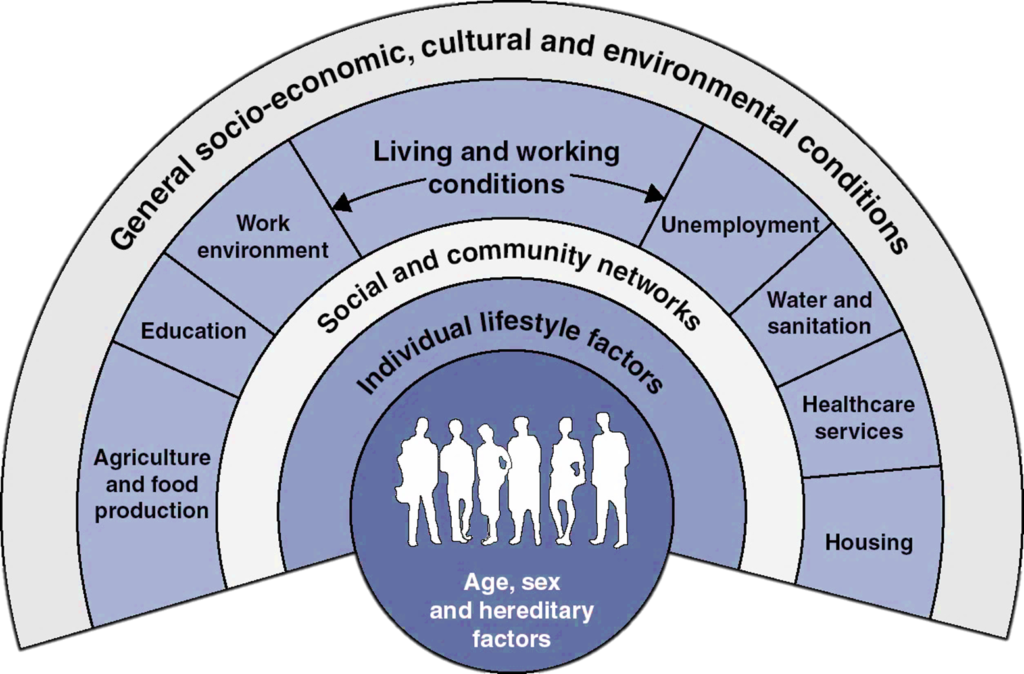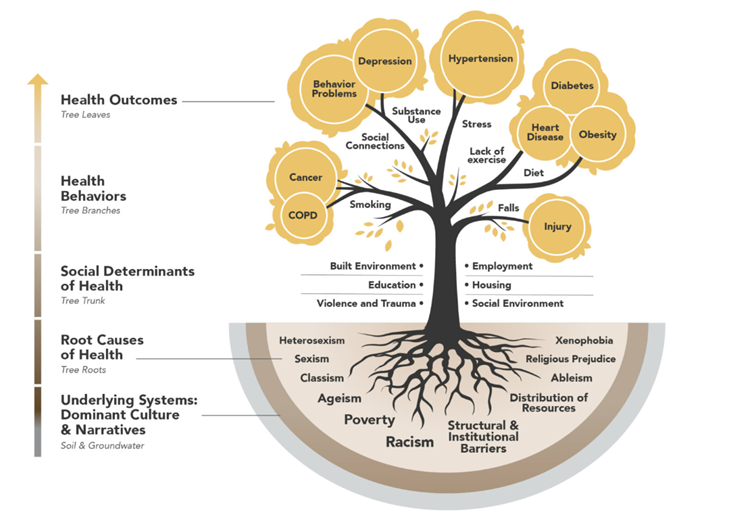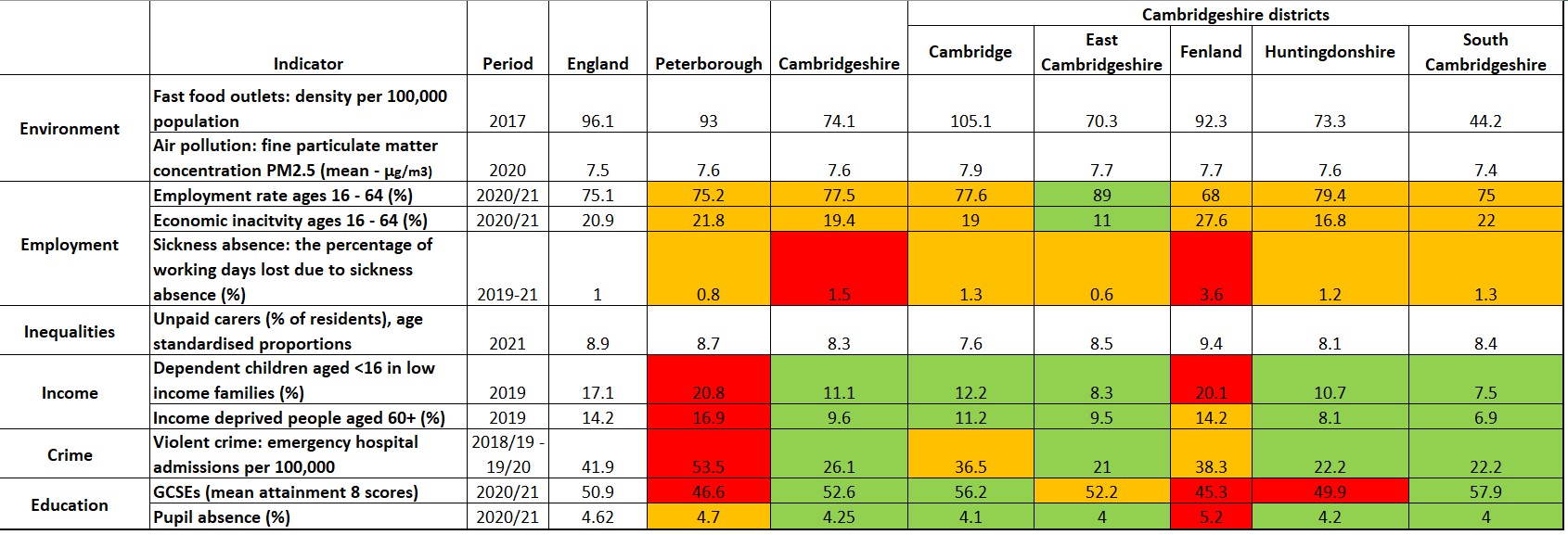The conditions in which we ‘are born, grow, work, live, and age, and the wider set of forces and systems shaping the conditions of daily life’ are central to our mental health (1). The following chapter describes how these factors are important to mental health and summarises their national and local picture. It includes a local data pack which can be accessed here. The full chapter can also be downloaded as a pdf.
The table below gives an overview of key measures across each sub-section of this chapter, by comparing local data to the latest national averages. Green circles indicate where scores are better than the national average, orange where they are statistically similar, and red when they are worse than average.
Table 1: A summary of local environmental factors, compared to the national averages. Green indicates scores are better, orange that are similar, and red that are worse, than the national average. Data sources can be found here.
This chapter will report on the following factors in terms of how they impact mental health, and their national and local data trends:
Introduction
- The conditions in which we ‘are born, grow, work, live, and age, and the wider set of forces and systems shaping the conditions of daily life’ are central to our mental health (1).
- These environmental factors (known as the social determinants of health) have been estimated to determine between 80 to 90% of health outcomes, whilst the healthcare system is thought to define just 10 to 20% of health outcomes (2).
- This chapter will examine environmental factors to identify areas and population groups in Cambridgeshire and Peterborough (C & P) that are at higher risk of mental health problems, and to explore factors that lead to inequalities in mental health.

Figure 1: Model of health determinants. Source: Whitehead and Dahlgren 1991
- These environmental factors are interrelated. They affect individuals over the life-course: positive and negative experiences can accumulate over time and can ultimately be maintained over generations.
- There are some gaps in locally collected data. Some information was also collected prior to the COVID-19 pandemic, which has exacerbated pre-existing inequalities in health (3), and thus may underestimate current mental health risk factors.
The Massachusetts Community Health & Healthy Aging Funds have developed a model similar to Whitehead and Dahlgren but that explicitly recognises the impact of underlying systems such as poverty and racism, see below. this model is useful in highlighting where we need to work across systems to address root causes.
Figure 2: The Health Tree: Connecting Health Outcomes to Root Causes

Areas for future work
The following questions were raised in the writing of this chapter and highlight potential future areas of research.
- What is the local picture of unsecured debt and financial insecurity?
- How has the backlog in court cases impacted victims’ mental health?
- How many adults are participating in learning locally, and what are the demographics of this group?
- What is the best way of collaborating with local partners to involve mental health in local work improving environmental factors such as housing and employment?
Additional resources
- Download the full data pack for this chapter as a powerpoint
- World Health Organisation report on the Social determinants of mental health
- Professor Michael Marmot’s report Health equity in England: the Marmot review 10 years on
- Psychosocial pathways and health outcomes: Informing action on health inequalities
- Mentally Healthier Nation
- The social determinants of mental health and disorder: evidence, prevention and recommendations
References
- World Health Organisation. Social determinants of health [Internet]. 2022 [cited 2022 Sep 2]. Available from: https://www.who.int/health-topics/social-determinants-of-health
- Hood CM, Gennuso KP, Swain GR, Catlin BB. County Health Rankings: Relationships between Determinant Factors and Health Outcomes. Am J Prev Med. 2016;50(2).
- Marmot M, Allen J, Goldblatt P, Herd E, Morrison J. Build Back Fairer: The Covid-19 Marmot Review. The Health Foundation, Institute of Health Equity. 2020;

